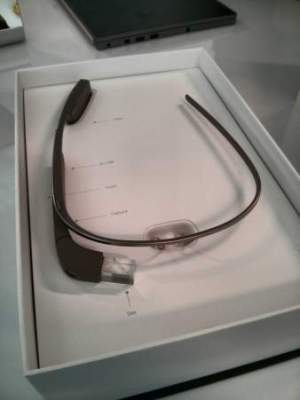The limited launched of Google Glass earlier this year was greeted with a lot of hype and the inevitable backlash, but one thing this first version of Glass didn’t show yet was the full potential of the platform. That’s because developers can’t do all that much with Glass right now. They can push messages and receive images, videos and audio from the device through the so-called Mirror API, but that’s about it right now.
Even though Glass runs on Android, the company hasn’t made its long-announced Glass Developer Kit (GDK) – which will allow developers to write complex Android apps that run on Glass itself – available yet. For many developers, the Mirror API was quite a disappointment, especially after Google showed off some of Glass’ more advanced features in a demo video last year and then didn’t develop a similar experience in the first prototype. Now, however, it looks like it’s just a matter of weeks before Google will release the GDK and allow for Glass users to install “real” Glass apps on the device.
Google started encouraging developers to hack Glass and run Android apps on it at its I/O developer conference earlier this year, and in July, it told people to start using the standard Android SDK to work on Android apps for Glass.
With the release of the GDK, Google will open the doors for a whole new group of Glass apps that are currently either impossible to build or just available to those who are willing to hack their $1,500 spectacles. The GDK will allow apps to access the compass, gyroscope, accelerometer and other low-level hardware on the device. Most importantly, however, developers will also be able to render complex OpenGL-based graphics on the devices. Right now, all they get are HTML-based cards for their apps, but with the GDK, they will be able to build real-time augmented-reality apps, games and more complex and innovative user interfaces.
I’ve seen a number of these apps as hacks over the last few months and they make for a completely different user experience on Glass than the usual interface. To get a glimpse of what’s possible with the GDK, just take a look at the Glass navigation experience. That’s currently the only full-blown app on Glass that uses most of the graphics capabilities of Glass and the built-in sensors. The other Glass feature that shows you some of the potential of the GDK is the famous Glass easter egg that introduces you to the Glass team.
All of these new capabilities will likely stir some of the controversy around Glass once again – especially once the first real-time facial recognition apps find their way onto the device without the need to hack it. Still, the GDK will finally free Glass from being what’s essentially a fancy Google Now client with some third-party apps to a full-blown platform for developers.
